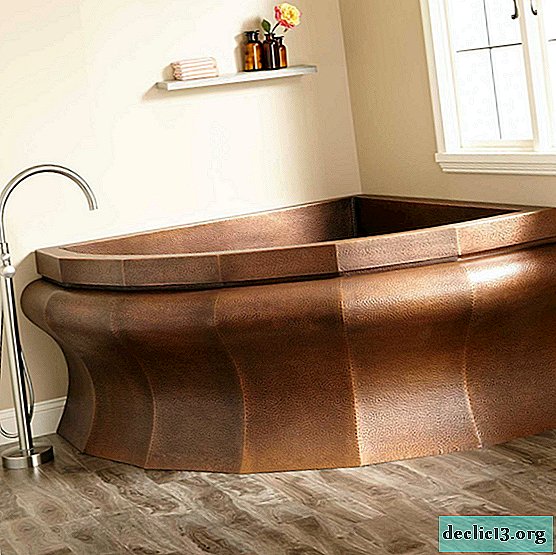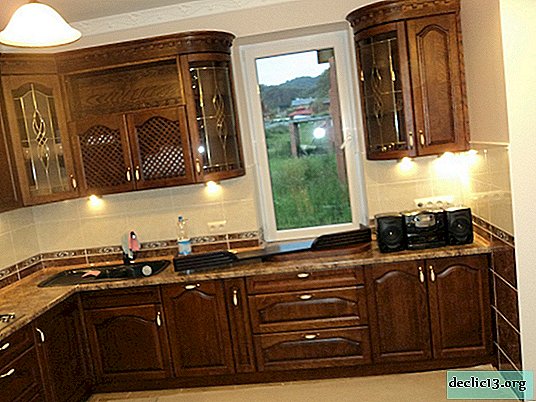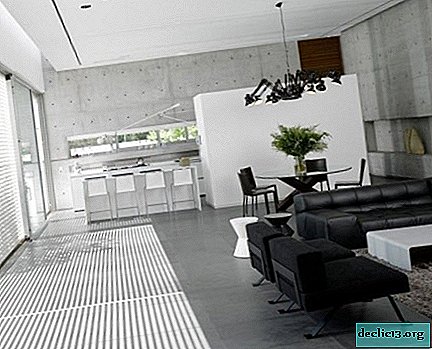Options for lifting mechanisms for the bed, the nuances of operation
For apartments, especially small ones, the real problem is the lack of free space. Therefore, their owners are looking for any ways to save usable space. A big help to them in this can be provided by the lifting mechanism for the bed, the use of which will free up part of the living space. Consider the characteristics of different designs of lifting mechanisms and beds.
The purpose of the mechanisms
Lifting mechanisms allow you to expand the functions of the beds and free up part of the living area of the house. There are two ways to do this. The first makes it possible to put the bed in an upright position and clean it in a closet. And you can transform it into another piece of furniture at a time when the bed is not in use, thereby freeing up scarce living space.
The second method adds beds the ability to store household items, linen and clothes. A box for it is placed under a rising bed. Such a solution can eliminate the need to purchase a closet, saving money and the area of the bedroom that would be required to install this piece of furniture.
Beds with lifting devices have some more useful qualities:
- They carefully store things - the berth closes the box very tightly and does not pass dust;
- They have an aesthetic appearance - bedding can be cleaned without problems in a box and the berth looks very aesthetically pleasing;
- They simplify cleaning - under such a bed, dust does not accumulate and it will always be clean there.
Special mechanisms are installed to lift and hold the berth


Varieties
There are three types of bed lifting devices:
Manual
This is the easiest lifting mechanism for a hinged bed. The principle of its work is based on the use of physical strength of a person, because it does not contain power nodes that compensate for the weight of a raised bed. Advantages of manual mechanisms: low price, durability and reliability.
It is not recommended to install manual lifting mechanisms on children's beds. The child may not be able to cope with laying out the bed and be injured.


Spring loaded
As a hoist, such mechanisms use coil springs, which take on part of the load and greatly facilitate the transformation of the bed. If it is necessary to reduce the strength of the mechanism, it is enough to remove the springs, but it is impossible to increase it. Over time, the springs gradually stretch, the joints wear out and, in the end, the mechanism has to be changed.


On gas shock absorbers
This lifting mechanism is the most comfortable, because it takes on all the load when raising the bed. This quality allows the use of beds with such a mechanism for women, adolescents, and people with disabilities.
Such a bed lifting mechanism uses a gas shock absorber as a power unit. It consists of a cylinder filled with high pressure nitrogen, an oil damper and a piston with a rod.
The mechanism with a gas shock absorber consists of:
- Metal plates and corners;
- Steel axis;
- Gas lift.
Plates and corners are attached to the bedroom place and to the sides of the box. When lowering, the plates rotate on the axis and the gas elevator is compressed under the pressure created by the weight of the berth. When lifting, the gas pressure force pushes the piston with the rod, which smoothly translates the bed into a vertical position.
The power of gas lifts is indicated in Newtons (N). Beds require mechanisms with power from 600 N to 2200 N.
The only minus of the lift with a gas lift is its high cost, which, however, is justified by its ease of use and durability.


Dimensions and specifications
The beds differ in several characteristics, each of which matters when choosing the best option for a berth lift.
Dimensions
Length - the standard length of beds for adults is in the range from 200 to 220 cm, for children - from 120 to 190 cm. Width - depends on the number of beds. Children's beds have a width of 60-70 cm, single 90-100 cm, the standard width of double beds is from 120 to 160 cm.
The height is chosen so that it is easier for its users to go to bed and get up (lower for children, higher for older people). The combinations of length and width within the specified limits can be very different and are selected depending on the desire of those who will sleep on it.
Beds of 160x200 cm in size with a lifting mechanism with a gas lift can be considered the standard for double models. All of these parameters affect the choice of a lifting device only in combination with other characteristics.
The weight of the berth is mainly influenced by the mattress. There are a lot of varieties of its fillers and their weight can vary significantly. The weight of the lifting part of the bed is the main factor determining the necessary type and power of the lifting mechanism. For example, for lifting a double bed with an orthopedic mattress, the mechanism on the springs is not very suitable, not to mention the manual version. And for a single place with a foam mattress, the use of an expensive gas mechanism will be unjustified.


Design
Beds with a lifting mechanism have two types of construction - with horizontal lifting of a berth and with lifting of the whole bed vertically (wardrobe-bed). There are two ways to raise a berth: fixing it parallel to the horizontal level of the box at a certain distance from it or opening it according to the book principle, from the foot of the bed.
In addition to the foot, any side of the bed can also be lifted if you install a slightly different lifting mechanism. Lateral rise is needed in cases when, for reasons of optimal placement, it was decided to put the bed sideways close to the wall.
All options require a symmetrical installation on the box of two similar lifting devices. For a single version of this design, any lifting device is suitable. In double rooms, as a rule, gas lifts are used regardless of the weight of the bed.
There are also two options for lifting the wardrobe-bed. The bed rises either at the foot, or the side. In both cases, the transformation can be done with very little effort, if the lifting mechanism of this bed uses gas lift. But its power for each option with a single performance will be different. When lifting from the side, the use of a spring hoist is possible. A hand-held device for this design is usually not used.
Installing a very powerful gas lift on the bed is not recommended, since in this case it will be very difficult to lower or raise the frame. It is possible to roughly determine the required power from the calculation of 10 N per 1 kilogram of the weight of the lifting structure.
When choosing the type of lifting device, three more factors must be considered:
- Operation mode - regular raising of a berth or occasional;
- The physical capabilities of the one who will sleep on it;
- The price of the lift - the cost of different types of lifting devices vary by an order, so not every user will be willing to give money for an expensive lift without the need.
 Horizontal
Horizontal Vertical
VerticalRules for safe use
When operating lifting beds, simple safety rules should be observed:
- A wardrobe bed in a vertical position must necessarily be securely attached to the wall;
- When raising, and especially when lowering the beds, it is recommended to stand on the side of the structure;
- When using a device with a spring shock absorber or manual, the berth in the raised position must be additionally fixed with a special support.
The safest are lifting devices on gas lifts. They reliably hold the bed in the raised position, because the piston of the gas lift is fully extended and in this state it cannot compress spontaneously. Some firms offer a gas lift lock on the gas spring stem, but this is for overly cautious buyers. The bed, in principle, cannot fall sharply down. If even suddenly one gas lift suddenly fails, then the bed will slowly fall due to the second.


Reliability
All mechanisms for raising the bed are distinguished by a fairly high level of reliability. But here you need to make a reservation - this applies to products of manufacturers that occupy a leading position in the market for these devices and have earned the trust of customers. For example, the best gas lifts are German, and the spring devices are Italian.
In spring lifting mechanisms, the main load falls on the spring itself, which leads to its wear. In addition, devices of this type do not withstand the increased load on the berth. During use, springs sometimes pop up and gradually stretch. For these reasons, the warranty on them does not exceed 5 years.
Gas lifts have a guarantee of 10 years and are designed for 20 thousand bed raising-lowering, which indicates the high reliability of the gas lifting device. The most reliable and durable mechanism is recognized as a manual device on the hinges. The reason is simple - there is nothing to break.
In conclusion, advice on how to choose the correct lifting mechanism for the bed. For lightweight single beds, spring devices are perfect. But, if the budget allows, it is better to choose a gas one. Its high price will pay off - the device will last for many years without repair or replacement. Well, the manual option is suitable for small beds, which do not have to be opened often.



















